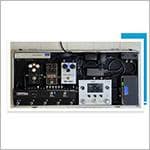When writing original songs, many people run into the problem of their basslines sounding “too simple and boring”...
This is especially common among beginners in composition or those with little experience playing bass. More often than not, they fall into the pattern of playing only the root note of each chord.
Of course, root notes play a crucial role in keeping a song grounded, but relying on them alone can make your track feel flat and lacking in momentum.
In this article, we’ll go over some beginner-friendly arrangement techniques to spice up your basslines and make them sound cooler, even if you’re just starting out.

Beginner Arrangement Techniques
For this beginner-level session, we’ll use a classic and easy-to-practice chord progression: C → F → G → C. This progression makes it easy to hear the changes and understand how each note change affects the bassline.
The drum pattern is a simple 8-beat, and the tempo is set at BPM 120.
To help you try out the ideas we’re discussing here, I’ve also included TAB notation and sample audio clips. Feel free to use them as a guide and try playing the examples on your own instrument.
1. Change the Rhythm
The feel of a bassline is shaped not only by pitch, but also heavily by rhythm.
Even if you stick to just the root notes, the overall groove can change dramatically depending on how you play them rhythmically.
For example:
Playing quarter notes creates a steady, relaxed vibe.
Using eighth notes adds drive and movement.
Placing notes on off-beats (the “&” counts) can make the groove more syncopated or funky.
Let’s listen to how the rhythm alone can change the feel when played over a simple 8-beat drum loop.
■ Examples
Quarter Note Groove
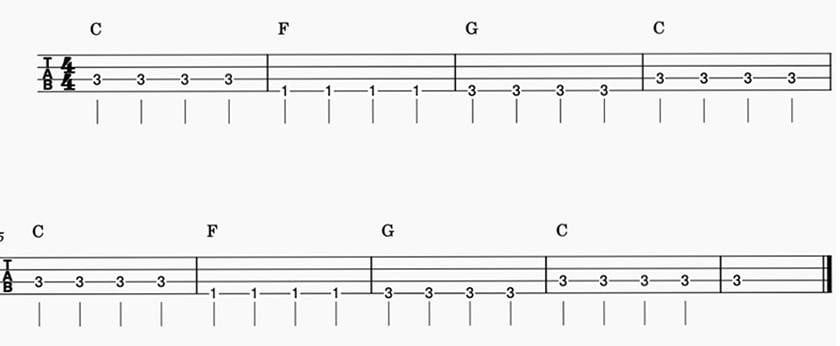
Playing quarter notes gives the rhythm breathing room and creates a calm, grounded feel.
Eighth Note Groove
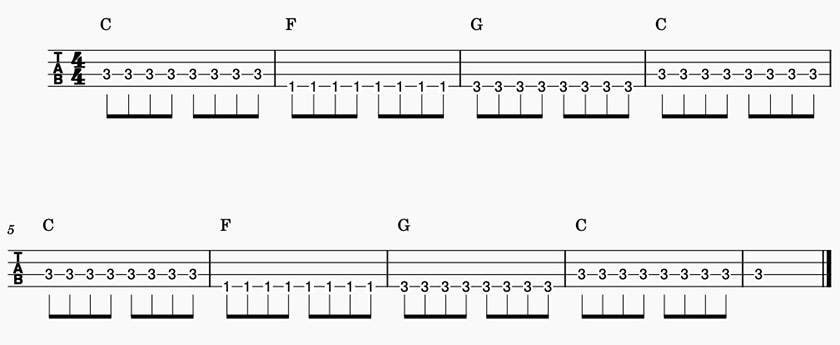
Switching to eighth notes adds momentum and a sense of energy or lightness to the track.
Playing on the Off-Beats
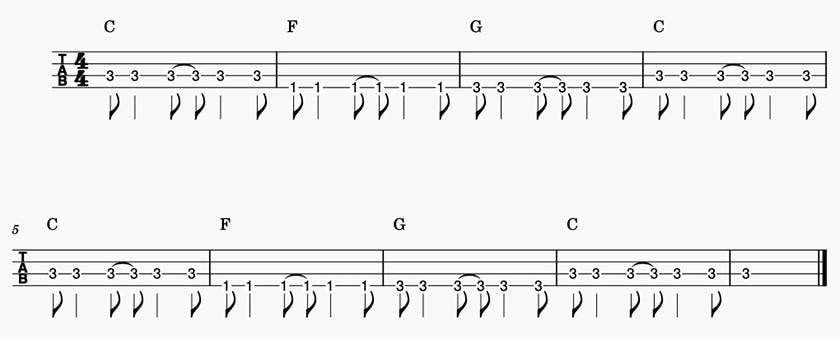
Purposely playing notes away from the kick drum, like on the off-beats, can be a powerful way to shift the groove.
The syncopation makes the line more interesting and adds some flavor to the line.
However, if you choose the wrong spots to play the off-beat, it can make the groove feel unstable or "off".
So, it’s important to listen closely and find the right balance between contrast and cohesion.
You’ll notice:
Even with the exact same drum pattern, just tweaking the bass rhythm dramatically changes the overall mood and energy of the track.
Even simple rhythm changes can breathe life into a loop.
2. Move Up or Down an Octave
Instead of repeating the root note in the same register, try jumping to the same note an octave up or down. This instantly adds a sense of motion and dimension.
Octave playing is especially common in genres like pop, funk, and disco, where the bassline helps carry both rhythm and melody.
■ Example
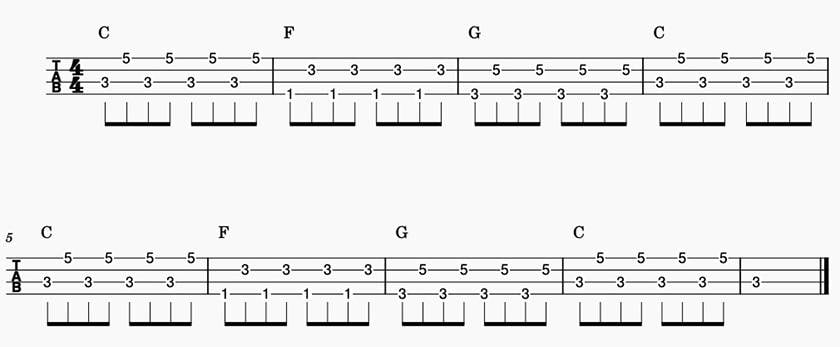
3. Add a Passing Note
This technique adds a single extra note between two chord root notes.
A passing note helps connect them more smoothly and it gives the bassline a flowing, melodic feel.
In the example below, I insert a passing tone that’s a half step below the root.
From C to F:
C→ E (half-step below F)→ F
■ Example
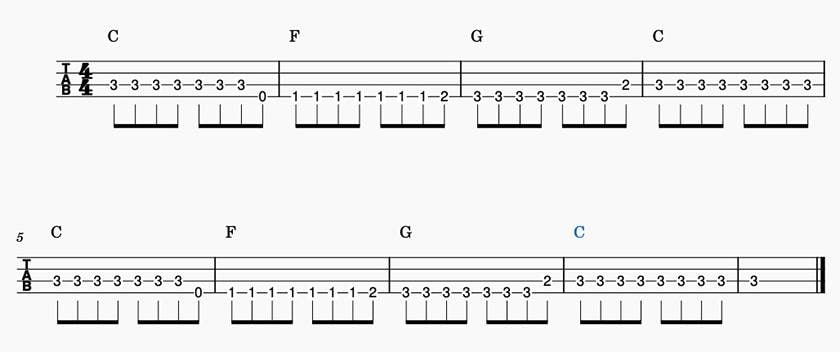
4. Play with the Length of Notes
Basslines are not only about what notes you play, but it’s how long you hold them.
The same note played staccato (short, detached) vs. legato (long, connected) can feel completely different rhythmically.
■ Example: Staccato
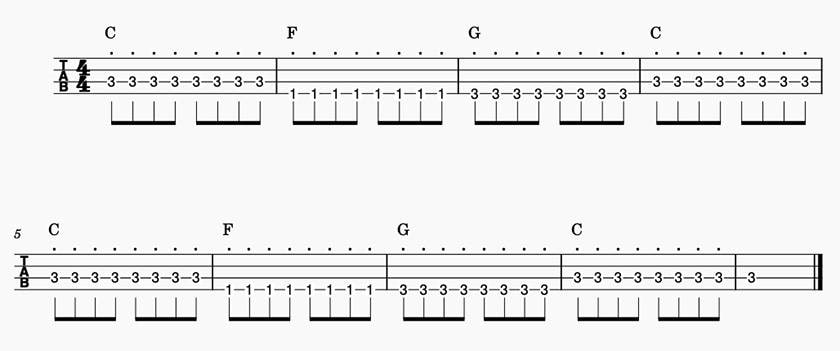
5. Combining the Root + Fifth
One of the safest and most effective bassline ideas for beginners is using the root note and its fifth.
This is a classic pattern often found in rock, country, and pop, and it naturally creates motion without sounding complex.
For the C chord:
C(root) → G(fifth) → C
■ Example
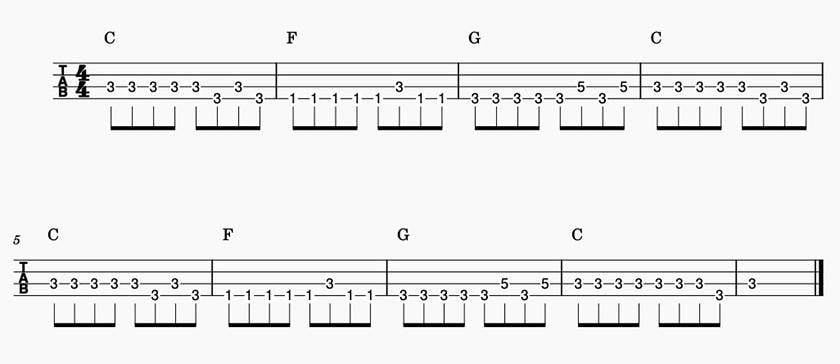
Arrangement Example
I put together a bassline by combining all the techniques I introduced so far.
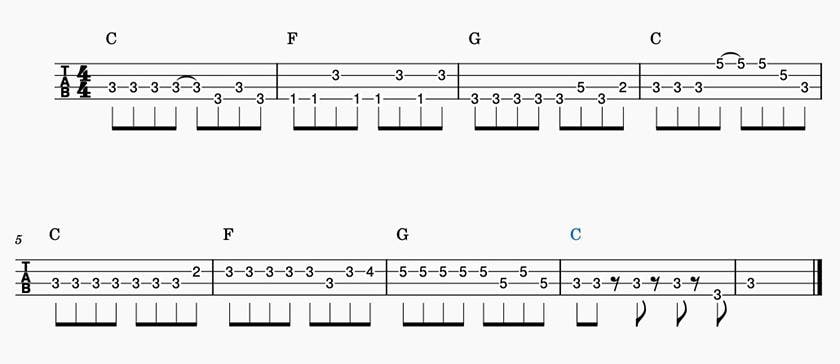
Since I included all the techniques, it feels a bit like an exercise phrase, but compared to a simple bassline that just plays the root notes, this one has much more character and expression.
Summary
In this beginner-friendly guide, I introduced five simple yet effective techniques to upgrade your basslines:
- Change up the rhythm
- Use octave jumps
- Add passing notes
- Control note length (staccato/legato)
- Combine root and fifth notes
These small tweaks can eliminate monotony and breathe life into your basslines.
But remember — less is more.
The main role of the bass is to support the melody and rhythm, not for stealing the spotlight. A little variation goes a long way in shaping the overall feeling of a song. Start with these foundational ideas and gradually build your own style. Try them out with your instrument and see how your lines evolve.
PLAYTECH / PTM-50BK Tuner/Metronome with Mic
The “sound & person” column is made up of contributions from you.
For details about contributing, click here.





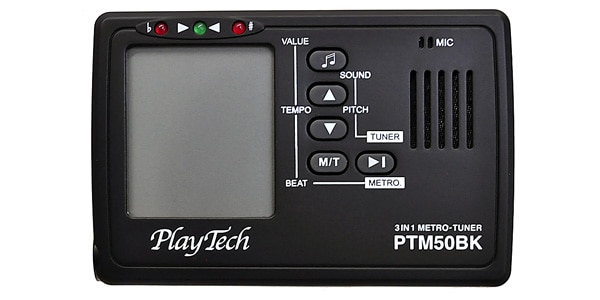

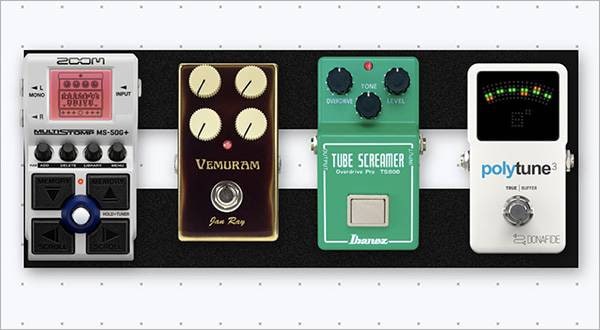
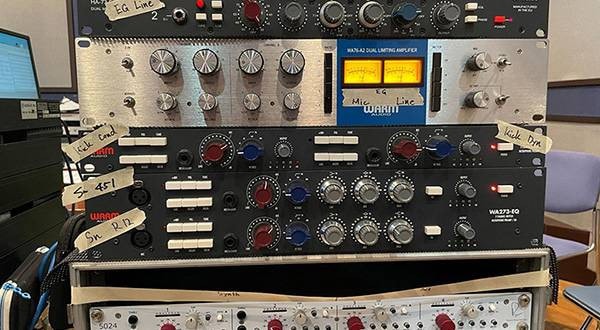


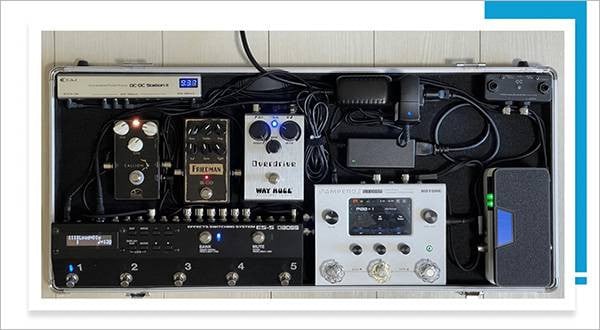


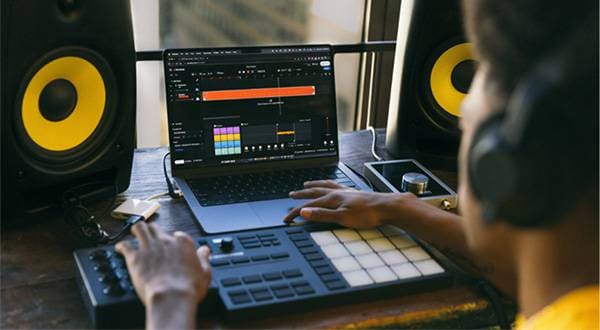
![[ Track make beginner must-see! ] Track creation _ learningmusic site where you can learn composition](/contents/uploads/thumbs/2/2020/2/20200204_2_9084_1.jpg)


 ベーシストの自宅練習に最適な BOSS ベース・アンプ3選
ベーシストの自宅練習に最適な BOSS ベース・アンプ3選
 基礎から学ぶベースレッスン
基礎から学ぶベースレッスン
 初心者必見!PLAYTECH 激スゴの理由!
初心者必見!PLAYTECH 激スゴの理由!
 超オススメのフレーズ道場 ベース
超オススメのフレーズ道場 ベース
 ベース奏法(指弾き編)
ベース奏法(指弾き編)
 ベース奏法(ピック弾き編)
ベース奏法(ピック弾き編)




